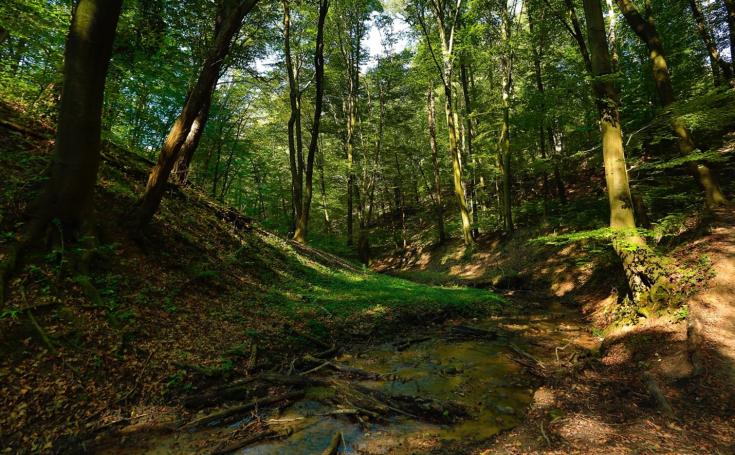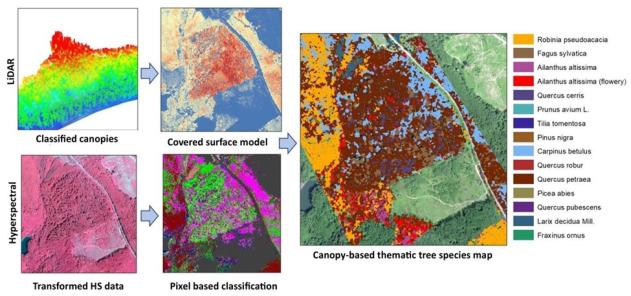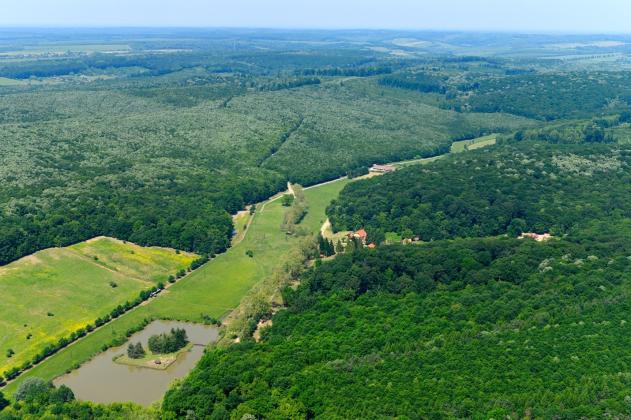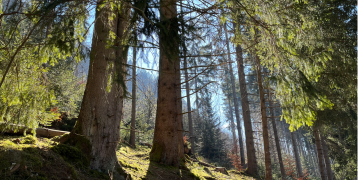Restoring ecological diversity of forests
Forests are the safeguards of biodiversity, as they host 80% of biodiversity on the planet. They cover around 45% of Europe’s surface, making them the largest terrestrial ecosystem in the EU.
Forests provide essential ecosystem services and are important for climate protection through carbon sequestration, stability of water cycle, erosion prevention, protection of biodiversity and many other economic, environmental, and sociocultural ecosystem services.
In July 2021, the European Commission adopted the New EU Forest Strategy for 2030, a flagship initiative of the European Green Deal.
Sustainable forest management
European forest areas have grown in the last decades thanks to natural processes, afforestation, sustainable management and active restoration. Nevertheless, forest ecosystems are affected by climate change impacts such as long periods of drought, increasing fires or insect outbreaks, as well as the growing amount of deadwood.
The condition of European forests is apparently deteriorating, with increasing mean defoliation of the main tree species. Forest management skilled workers are becoming rare in many EU regions, and this has an impact on the practices to maintain healthy forest ecosystems.
Sándor Sári, a Development Associate at Mecsekerdö (a public company specialized in forest management and owned by the State of Hungary) listed some benefits of sustainable forest management. “It helps to protect and conserve biodiversity by maintaining healthy ecosystems and reducing habitat destruction, can help maintain and enhance the carbon sequestration capacity of forests and improve water purification and air quality.”
A good practice reported in the PROGRESS project and implemented in the bordering region between Hungary and Croatia focused on restoring ecological diversity of forests with airborne imaging technologies (RED FAITH project).
The forest companies of the border region identified that monitoring of the forests is a first step to prevent invasive species and other endangering factors from spreading. They surveyed a total of 24,838 ha using airborne imaging technologies and defined parameters for monitoring. The pilot results allowed differentiation of species, calculating stocks, recognising invasive species and diseases.
The benefits of airborne imaging
According to Sári, “airborne imaging plays a crucial role in forest management by providing comprehensive, timely, and cost-effective data that aids in forest inventory, conservation, planning, and decision-making, contributing to the sustainable management and preservation of forest ecosystems.”
It enables large-scale data collection, is timely and cost-effective, and provides highly detailed and accurate information about the forest ecosystem, such as information about tree height or canopy structure.
“Aerial imaging can be used to make trends and monitor environmental changes and assess the impact of factors like climate change or disease outbreaks on forest ecosystems. It can assist in mapping and monitoring biodiversity within forests, or support forest planning and inventory management”, explains Sári.
While there is a growing interest in the remote sensing data analysis, the widespread applicability of this method in forestry is still relatively young, as the method requires staff with high technical skills.
“Four widely used aerial remote sensing methods with different operating methods for vegetation and soil mapping of forest areas [are] defined in the project: RGB photo, hyperspectral multispectral and LIDAR technology”, describes Sári.
The RED FAITH project has initiated investments in new technologies to train and recruit new people for remote research, in particular to monitor the spread of invasive species. The outcomes and all studies can be found on the project’s website. Sári pinpoints that the success of the project lied in an extremely collaborative and professional environment among all the involved partners.
“Engaging in the protection and restoration of forest ecosystems is a crucial step for regions to promote environmental sustainability and address various challenges like deforestation, climate change, and biodiversity loss”.
Key steps for an effective forest restoration strategy
Sári shares the initial steps that regions can take to engage in the protection and restoration of forest eco-systems:
- Conduct a comprehensive assessment of the region's forest resources, including forest types, tree species, and their health and distribution. Determine the primary threats to the forests, such as invasive species, unnecessary deforestation, illegal logging, pests, or wildfires.
- Develop, update and enforce forest policies and regulations that prioritise protection, sustainable management, and restoration efforts. Prevent illegal logging and deforestation.
- Designate protected areas to safeguard critical forest ecosystems and biodiversity.
- Implement initiatives for ecosystem restoration, such as wetland restoration, wildlife habitat enhancement, and soil conservation. Develop plans for planting selected native tree species in deforested or degraded areas to restore forest cover. Develop strategies for adapting to climate change and enhancing the resilience of forests to environmental stressors.
- Involve relevant stakeholders, including local communities, environmental organizations, forest companies and universities in the planning process and restoration efforts. Provide training and education to communities on sustainable forest management practices.
- Establish a system for continuous monitoring of forest health, illegal activities, and the impact of restoration efforts.
- Invest in research to better understand local ecosystems and develop innovative solutions for forest protection and restoration. Use technology like remote sensing, GIS (Geographic Information Systems), and data analytics for more effective forest management.
- Raise public awareness about the importance of forests and the need for their protection and restoration. Incorporate environmental education into school curricula to promote forest conservation among future generations.
- Work with international organisations and neighbouring regions to address transboundary forest conservation and restoration issues.
- Ensure adequate funding for forest protection and restoration programs. Explore opportunities for grants, partnerships, and investments from government agencies, NGOs, and private sector organisations.
“By taking these steps, regions can create a foundation for the protection and restoration of forest ecosystems. The key is to combine effective policies, community involvement, and sustainable practices to ensure the long-term health and vitality of forests”, concludes Sári.
Find more information:
Regional and local policymakers have various opportunities to protect and restore forest ecosystems. For example, the new Interreg Europe GIFT (Green Infrastructure for Forests and Trees) project aims to improve regional policies by raising awareness that sufficient green infrastructure of trees and forests is a prerequisite for halting biodiversity loss and mitigating climate change.
For a more in-depth exploration, read our latest policy brief on Forest Ecosystems





